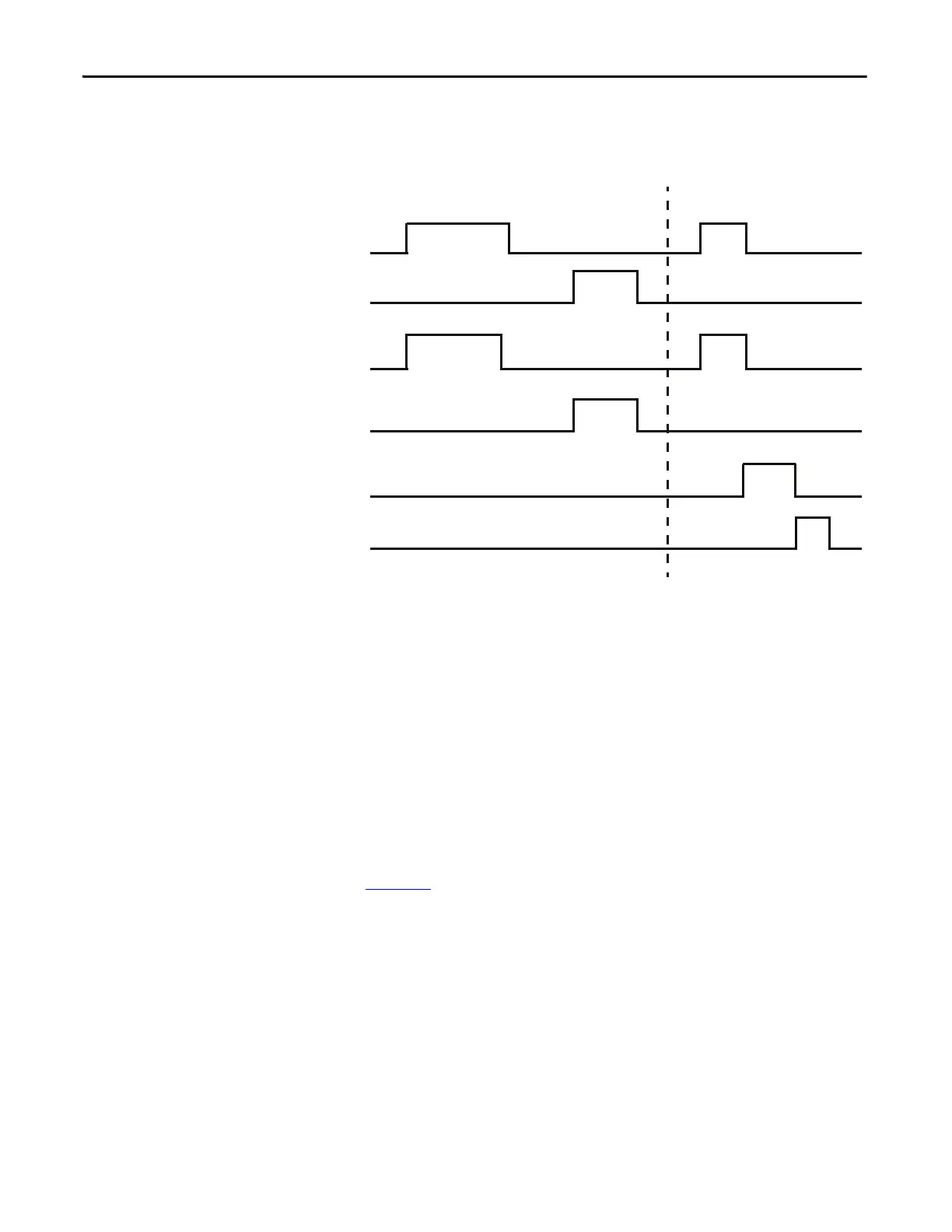250 Rockwell Automation Publication 193-UM015E-EN-P - October 2015
Chapter 5 Operating Modes
Timing Diagram
Figure 154 - Reversing Starter (Network & Local I/O) – Two-wire Control Timing Diagram
Reversing Starter (Network & Local I/O) – Three-wire Control
The E300 relay’s Operating Mode Reversing Starter (Network& Operator Station)
(Parameter 195 = 21) in Remote control mode uses network tags
LogicDefinedPt00Data in Output Assembly 144 to control Relay 0, which
controls the forward contactor coil, and LogicDefinedPt01Data in Output
Assembly 144 to control Relay 1, which controls the reversing contactor coil.
Both LogicDefinedPt00Data and LogicDefinedPt01Data are maintained values,
so the reversing starter remains energized when LogicDefinedPt00Data or
LogicDefinedPt01Data has a value of 1. You can program the appropriate state of
the starter when communication is lost using the Network Communication Fault
and Network Communication Idle parameters (Parameters 569 – 573) described
in Chapter 4
.
Local control mode uses a normally open momentary push button in Input 0 to
energize Output Relay 0, which controls the forward contactor coil. A normally
open momentary push button in Input 1 is used to energize Output Relay 1,
which controls the reversing contactor coil. A normally closed push button in
Input 2 is used to de-energize Output Relay 0 and Output Relay 1. Both Input 0,
Input 1, and Input 2 are momentary signals, so the reversing starter only energizes
if Input 2 is active and Input 0 or Input 1 is momentarily active.
Input 2 must be momentarily de-active before changing to another direction.
Trip Event
REV (Relay 1)
FWD (Relay 0)
Trip Status
Trip Reset
Forward
Reverse

